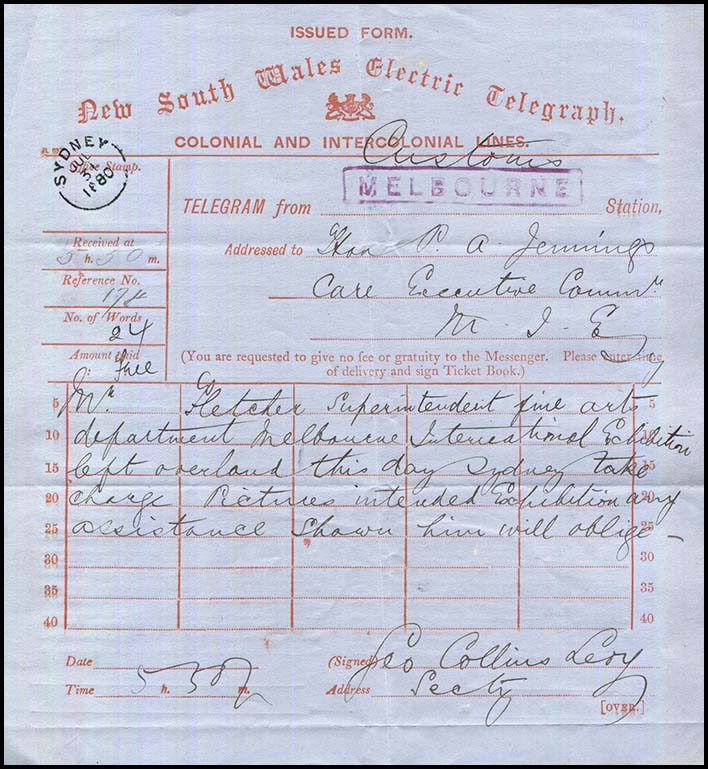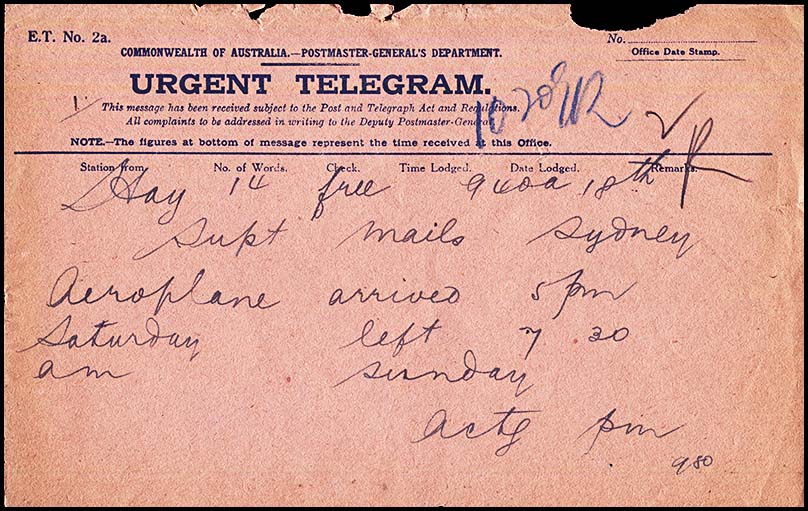Instructional marking - Free.
- Australia 1901-1988
- New South Wales
- Overview of NSW
- Telegraph lines
- Telegraph Offices
- Date stamps
- Forms
- Envelopes
- Instructional annotation
- Collect
- Delayed
- Free
- Immediate Urgent
- Reply paid
- Rates
- Stamps
- 1871 Telegraph stamps
- 1885 proposal
- 1893 proposal
- Queensland
- South Australia
- Tasmania
- Victoria
- Western Australia
- International
- Special aspects
As shown on another page, it was possible for the "normal people" to request that the receiver of a telegram pay for the cost of transmission. The COLLECT instructional marking is discussed on another page.
Government agencies were not explicitly charged for sending telegrams on the basis that it was the Government who was ultimately paying anyway. So no charging saved time and effort in accounting procedures. It also meant that government officials could send messages as frequently as they wished and those messages could be as long as they wished. The length of many messages and their frequency soon led to the Telegraph Offices in many locations becoming overloaded.
The indication of the Government-exempt telegram was the inclusion of the word FREE as an instructional marking after the cost had been determined. Early colonial examples of this marking are provided below.
The FREE annotation used during the NSW Colonial period.
Not many examples of FREE telegrams are recorded for New South Wales.
|
The FREE annotation used during the NSW Australia period.
AE-DU-2A: Urgent rate delivery form sent from Hay to Sydney (no date but about 1924). |

